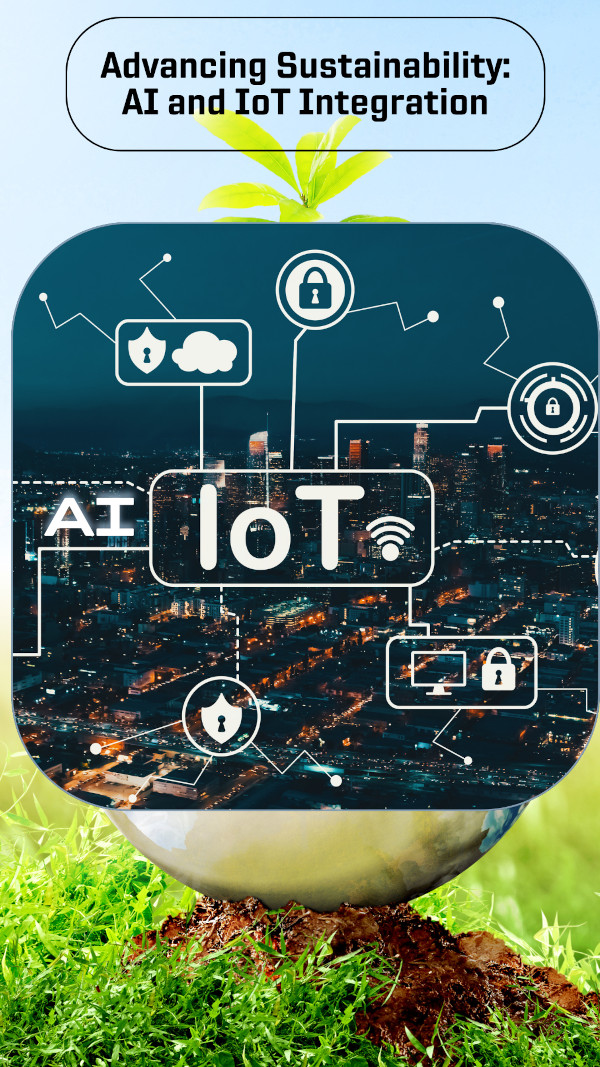Special Issue - Enhancing sustainability in academia through Artificial Intelligence (AI) and Internet of Things (IoT)
Newsletter
Artificial Intelligence (AI) and Internet of Things (IoT) offer unique opportunities to make academic environments more sustainable by streamlining operations and promoting a greener future. This article explores how AI and IoT can improve sustainability in academic settings through specific examples, addressing challenges, and evaluating their impact.
Bionote
Temiloluwa Emmanuel Amoo is a researcher at Polymat and a PhD candidate at the University of the Basque Country, Spain. He holds both a Bachelor’s and Master’s degree in Chemical Engineering from Covenant University, Nigeria. Amoo is currently exploring the intersection of material science (polymers) and machine learning. His goal is to leverage these emerging technologies to accelerate the discovery of specialized materials crucial for sustainable development. He is a recipient of the prestigious MSCA grant for his PhD. In addition to his research, Amoo is deeply interested in personal development.

Artificial Intelligence (AI) and Internet of Things (IoT) present unique opportunities to enhance sustainability in academic environments by optimizing operations and fostering a greener future. This article examines how AI and IoT can boost sustainability in educational settings through specific examples, discusses the challenges involved, and assesses their overall impact.
Data is intelligence
Institutions generate vast amounts of data daily, which can be transformed into valuable insights when utilized effectively. By implementing IoT devices to gather this data and leveraging AI models for analysis, resource management can be significantly improved, resulting in more efficient and sustainable operations.
Real-world applications
A notable example is the Smart Campus project at the University of Bologna’s Cesena campus in Italy (Ceccarini et al., 2021). They installed air quality sensors and cameras to count people in classrooms and labs. By visualizing the data, they were able to manage resources like classrooms and optimize timetables for significant energy savings.
At the University of Extremadura in Spain, IoT devices such as cameras and sensors were combined with AI algorithms to create an intelligent system of monitoring water usage patterns and detecting anomalies such as leakages (Barroso et al., 2023). An alarm is triggered if an anomaly is detected which helps in managing water usage more effectively.
Another example from the Technical University of Greece used IoT devices to understand past energy consumption trends (Marinakis & Doukas, 2018). By using predictive techniques, they achieved a 10% decrease in energy consumption related to heating and cooling and an 11% reduction in operational costs, with savings paying for the installation cost within two years.
Impact analysis
AI and IoT in academia can significantly reduce energy consumption and operational costs. For example, effective timetabling based on IoT data can save up to 5% on energy during heating and cooling seasons, reducing carbon footprint over time (Song et al., 2017). Financially, these savings allow universities to invest more in academic programs and scholarships, showing a positive return on investment. Furthermore, the data collected supports ongoing sustainability research, offering both practical and academic benefits.
Challenges and solutions
One challenge of integrating AI and IoT into academic infrastructure is data fragmentation, where data is scattered across different systems and not integrated. Universities need robust systems to bring all these data together. Connecting IoT devices to the internet would play a huge role in addressing this issue (Wang et al., 2021).
Another challenge is funding for IT infrastructure and training. Universities need to prioritize funding to harness these technologies’ potential for sustainability. Additionally, more connected systems are more vulnerable to cyberattacks. Investing in strong cybersecurity measures is crucial to protect data and maintain system integrity (Nishant et al., 2020).
Broader context and industry comparisons
IoT in manufacturing has revolutionized supply chain management, minimizing waste and improving energy efficiency. A comprehensive example of AI and IoT applications can be seen with big data solution companies like Palantir Technologies. They help industries meet their economic and sustainability goals by integrating their data into a software platform that provides visualization and decision- making suggestions (Gordon, 2021). This platform creates a digital twin of operations, synchronizing diverse data into a unified view, and helping stakeholders make informed decisions.
This industry example validates the benefits seen in academia and provides a roadmap for further integration. By studying these strategies, academic institutions can anticipate challenges and streamline their adaptation processes, thus accelerating sustainable improvements.
Takeaways
Integrating AI and IoT in academia holds significant promise for enhancing sustainability. As demonstrated by institutions like the University of Bologna and the University of Extremadura, these technologies offer tangible benefits in reducing environmental impact and optimizing resource usage. While challenges exist, they can be effectively managed through strategic planning and collaboration with technology partners. Ultimately, the continued adoption and improvement of AI and IoT in academia would be crucial in developing sustainable practices that can be applied across various sectors.
Temiloluwa E. Amoo
Researcher
University of the Basque Country UPV/EHU, Spain.
amootemiloluwa@yahoo.com
References
Barroso, S., Bustos, P., & Núñez, P. (2023). Towards a cyber-physical system for sustainable and smart building: a use case for optimising water consumption on a SmartCampus. Journal of Ambient Intelligence and Humanized Computing, 14(5).
Ceccarini, C., Mirri, S., Salomoni, P., & Prandi, C. (2021). On exploiting data visualization and IoT for increasing sustainability and safety in a smart campus. Mobile Networks and Applications, 26(5).
Gordon, L. (2021). Palantir & BP Deepen Partnership, Accelerate Energy Transition. https:// www.palantir.com/newsroom/press-releases/palantir-and-bp-deepen-partnership- accelerate-energy-transition/
Marinakis, V., & Doukas, H. (2018). An advanced IoT-based system for intelligent energy management in buildings. Sensors (Switzerland), 18(2).
Nishant, R., Kennedy, M., & Corbett, J. (2020). Artificial intelligence for sustainability: Challenges, opportunities, and a research agenda. International Journal of Information Management, 53.
Song, K., Kim, S., Park, M., & Lee, H. S. (2017). Energy efficiency-based course timetabling for university buildings. Energy, 139.
Wang, K., Zhao, Y., Gangadhari, R. K., & Li, Z. (2021). Analyzing the adoption challenges of the internet of things (IoT) and artificial intelligence (AI) for smart cities in china. Sustainability (Switzerland), 13(19).